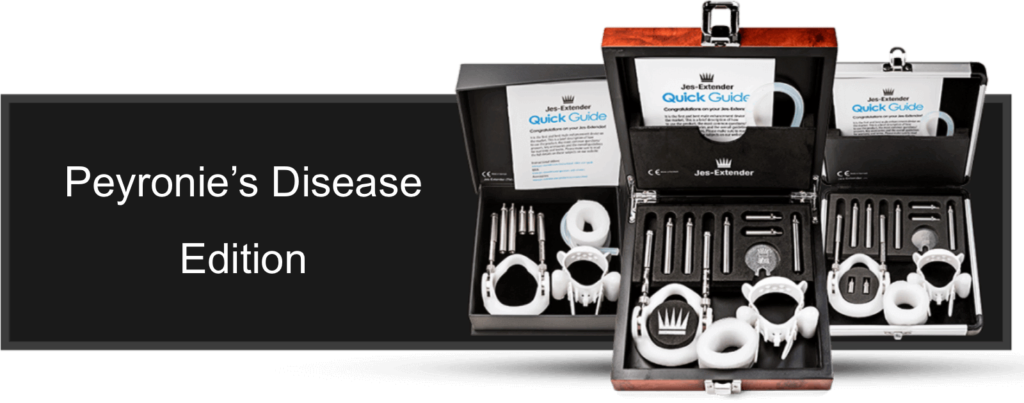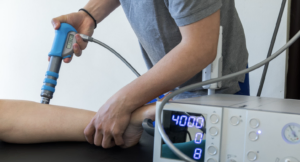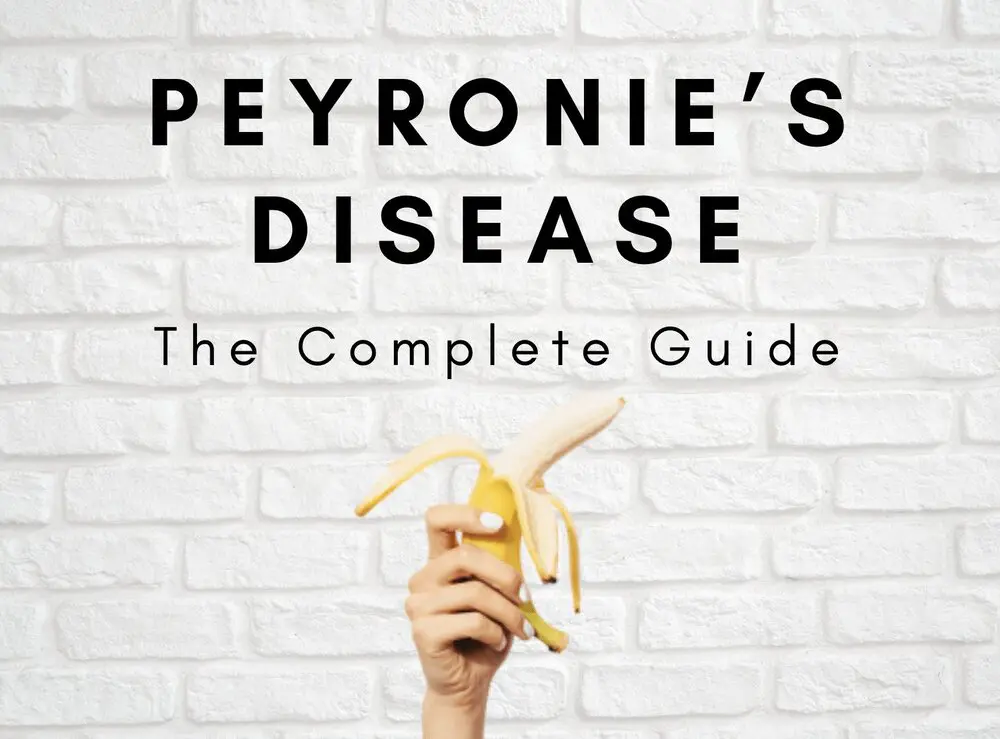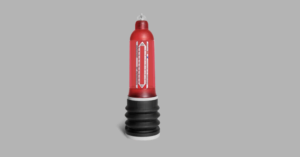What is Peyronie’s Disease?
Peyronie’s disease is essentially having a bent or curved penis, and it affects more men than you might think. It is considered a type of erectile dysfunction because the bend causes pain when a man has an erection, and the discomfort interferes with the ability to have a healthy and satisfying sex life. Some men may not realize that the pain they experience during sex is due to a bend in the penis or in connective tissue.
What Causes Peyronie’s Disease?
Who is at Risk for Peyronie’s Disease?
Peyronie’s disease is most often found in men who are genetically pre-disposed or older. From a genetic standpoint, the penis may be just one area of the body that heals with excessive scar tissue. In older men, changes to the body results in a less effective ability to heal connective tissue, and Peyronie’s disease is just one indication of how the body struggles to heal properly.
Are Younger Men at Risk for Peyronie’s Disease?
Although Peyronie’s disease in young men is rare, approximately 10% of all cases are diagnosed in men who are 40 years old or younger. This demographic also represents the most acute cases of erection pain. Only two out of ten men who are under 40 years old and diagnosed with Peyronie’s disease experience any other symptoms of erectile dysfunction or penile curvature. This may be due to the healing capacity of this sub-population, making the condition more difficult to detect in the earlier stages. Treatment is often required for younger men with the condition.

What are the Symptoms and Signs of Peyronie’s Disease?
Having a bend in your penis does not necessarily mean that you have this condition. If you have a bent penis, your doctor will look for signs of a specific type of scar tissue. For Peyronie’s, the scar tissue develops as a flat plaque that is easy to feel through the skin when you have an erect penis. You may notice the scar tissue yourself when examining the area of the bend in your penis. Penile issues that cause Peyronie’s disease are more common on the top of the penis, but it may also occur on the sides and underside of the penis.
What Other Changes to the Penis are Caused by Peyronie’s Disease?
Some men with Peyronie’s disease develop a thinning around the circumference that is noticeable when a man has an erect penis. This typically occurs when calcium develops around the scar tissue and hardens. In these cases, men may experience erections that are soft, extremely painful, or significantly bent. When calcium is involved, it is very difficult for a man to have sexual intercourse, as the erections are painful to him and his partner due to the side of the penis being bent.
What are Secondary Symptoms of Peyronie’s Disease in Men?
Peyronie’s disease is a complex condition that has physical and emotional implications. The difficulty with or inability to have intercourse may result in a man feeling anxious, depressed, withdrawn, and insecure. These emotional symptoms are just as, if not more, debilitating than the physical changes that occur as a result of Peyronie's.

Is Treatment Recommended for Peyronie’s Disease?
If the symptoms of Peyronie's Disease interferes with your ability to have a healthy sex life, treatment is recommended to restore the connective tissue. This issue cannot be cured, but there are many ways to minimize the discomfort that prevents you from having intercourse. Some options include surgery that helps to reshape the side of the penis.
What Symptoms Require Immediate Medical Attention?
Two symptoms of Peyronie’s disease that require immediate medical attention are severe pain and persistent erections. The pain may occur with or without an erection. Persistent erections are defined as one that lasts for several hours and may or may not be associated with sexual activity. These types of erections are often accompanied by acute pain. Pain and prolonged erections can be caused by a range of medical conditions, so you should not assume that it is Peyronie’s disease until you receive an accurate diagnosis.
What are the Traditional Treatment Options for Peyronie’s Disease?
The traditional treatment options aim to break down the scar tissue. One such medication is clostridium histolyticum that is sold as Xiaflex. The medication is injected into the penis and gradually breaks down the collagen, which is essentially the cause of peyronie. To be a candidate for the treatment, your penis must be curved at least 30° up, down, to the left, or to the right. Xiaflex works in approximately 60% of men and provides an estimated 17° improvement in the curvature of the penis. While this drug is promising for some men, it does not provide the efficacy that most men desire for the treatment of their Peyronie’s disease.
Surgery is used for treating Peyronie’s disease, but, as with any type of invasive procedure, you risk developing new scar tissue. Non-surgical options are available for Peyronie’s disease, such as:
- Shock wave therapy
- Penile traction therapy
- Vacuum devices
- Penimaster Pro
Shock Wave Therapy

What is Shock Wave Therapy for Peyronie’s Disease?
Shock wave therapy has been studied by researchers and used in practice for treating Peyronie’s disease. The results indicate that this is a more effective therapy compared to medication, producing improvement for more than 90% of men. Low-intensity extracorporeal shock wave therapy is proven to reduce pain in men with Peyronie’s disease and reduce or slow the penile curvature associated with Peyronie. Some men also notice an improvement in the quality of their erections, all without the pain and risk of surgery.
How Does Shock Wave Therapy Help with Peyronie’s Disease?
Shock wave therapy for Peyronie’s disease is non-invasive. A small probe is used to administer shock waves to the area where the plaque has developed. The shock waves break down the scar tissue and allow the penile curve to straighten without surgery. The shock waves also trigger the release of growth factors in the penile tissue, and these growth factors help your body develop new cells in the penis tissue and blood vessels. The treatment takes less than 30 minutes.
What Results Can Be Expected from Shock Wave Therapy for Peyronie’s Disease?
The best outcomes from shock wave therapy for Peyronie’s disease are typically realized after a series of up to 12 treatments over a six-week period. Individual results do vary, but generally speaking, shock wave therapy may help with the curvature of your penis, pain, erection quality, and other symptoms associated with peyronie.
Penile Traction Therapy
What is Penile Traction Therapy for Peyronie’s Disease?
Penile traction therapy is a technique that involves using a device to gently stretch the penis. Studies have shown that penile traction therapy can add length, straighten curvatures, and break down scar tissue, so this is often a great alternative to injections or surgery. Men who live with Peyronie’s disease have also reported a reduction in the discomfort during erections and intercourse.
How Does Penile Traction Therapy Help with Peyronie’s Disease?
Penile traction therapy devices are designed with a ring and two extendable bars that are attached to a flexible band at the other end of the device. You place the ring around the base of your penis and then insert the head into the flexible band. Once the device is in place, you extend the bars until you feel a slight bit of tension. Typically, the traction must be performed for four to six hours per day consistently, but this does vary by individual. By putting a mild amount of tension on the penis, you are causing multiple micro-injuries in the penile tissue that stimulate the development of new cells. Penile traction therapy is a gradual process that must be done correctly and gradually,a nd it is usually the preferred method over surgery. If you aren't careful with the deviceinjuries, you risk injuring your penis and possibly worsening the symptoms of your Peyronie’s disease, which can lead to needing surgery.
What Results Can Be Expected from Penile Traction Therapy for Peyronie’s Disease?
By using penile traction therapy as prescribed, you may have an improvement in penile curvature, length, and discomfort. You may also notice that your erections are firmer.
Here are some of the Penile Traction Devices we have reviewed:
Vacuum Devices
What are Vacuum Devices for Peyronie’s Disease?
Vacuum devices work much the same as penile traction therapy for Peyronie’s disease. The goal is to add new cells to the penis and break down scar tissue that causes pain. Rather than use tension on the penis via extendable bars, vacuum devices rely on air pressure.
How Do Vacuum Devices Help With Peyronie’s Disease?
A vacuum device is designed with a ring, clear cylinder, and air pump. You fit the cylinder over your penis until the ring rests at the base. You then use a pump to apply a suctioning air pressure to your penis. As with the penile traction technique, the idea is to apply the pressure to a specific point, and let the penis rest in this state. Applying too much suction may cause injury to your penis and exacerbate your Peyronie’s disease symptoms.
What Results Can Be Expected from Vacuum Devices for Peyronie’s Disease?
In research studies and practical applications, vacuum devices have been shown to improve erectile function and improve the discomforts of Peyronie’s disease in about eight weeks. The key to using vacuum devices is that you have to be consistent and use them as prescribed.
Here are a few of the top vacuum devices we have reviewed:
Are There Any Natural Products That Help With Peyronie’s Disease?
Natural supplements have benefited men with Peyronie’s disease. In 2001, a study was conducted to determine the benefits of acetyl-l-carnitine. It was shown that men who used the supplement realized better results for treating their early and acute Peyronie’s disease compared to other options. Another study in 2010 found that coenzyme Q10 helps with erectile dysfunction and reducing penile curvature in men with Peyronie’s disease. Vitamin E is another supplement that has been considered, but the research has been inconclusive. The best approach when using supplements is to speak with your doctor and use them as recommended and in conjunction with other therapies for Peyronie’s disease.
What Else Can Help With Peyronie’s Disease?
Two other areas that you can consider for treating your Peyronie’s disease without surgery are exercises and lifestyle modifications. You can try the exercises before shock wave therapy, penile traction, and vacuum devices, or begin the exercises after these other therapies. You should not perform penile exercises in conjunction with other treatments, as this may cause trauma to your penis.
Here are the steps to follow for penile exercises for Peyronie’s disease:
- Find a comfortable position – laying down on your back works best
- Gently wrap your hand around the base of your penis
- Apply a gentle stretching from the base of the penis to the head
- Perform this exercise for 30 seconds three times per day
If you have an erection during the day that is not caused by sexual activity (spontaneous erection), you can follow these steps:
- Gently wrap your hand around the base of the penis
- Slowly move your hand towards the head while gently straightening the penis
- Perform this movement for 30 seconds
Some lifestyle choices have been linked to higher risk and more significant issues from Peyronie’s disease. Consider the following changes to your lifestyle to reduce your symptoms:
- Stop or reduce your smoking
- Exercise more
- Avoid illicit drugs
- Reduce your alcohol consumption
- Male Enhancement Solutions
Also we wanted to include a list of Top Male Enhancement Solutions:
How to Discuss Peyronie’s Disease with Your Partner
You should also talk to your partner about your Peyronie’s disease and be open about any symptoms that you are having that interfere with sexual intercourse. This protects the emotions of both sides and helps garner a more comprehensive understanding of the circumstances. Even if you are uncertain if you have Peyronie’s disease, these types of conversations will only build a stronger foundation for your relationship. You will also feel more relieved because you are no longer hiding your most intimate concerns. Research continues into Peyronie’s disease and its symptoms, so keep researching until you find what works best for you.










